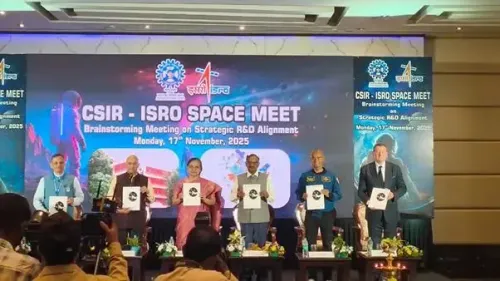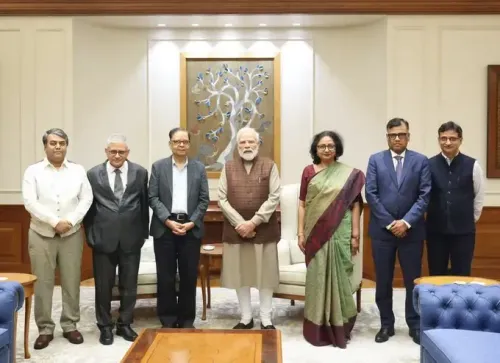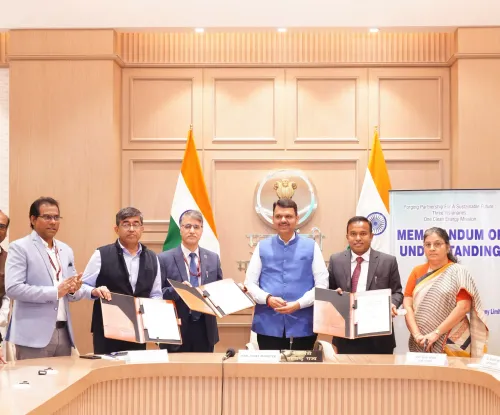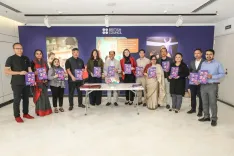How Will GST 2.0 and India-Japan FTA Transform India's $74 Billion Auto Parts Ecosystem?
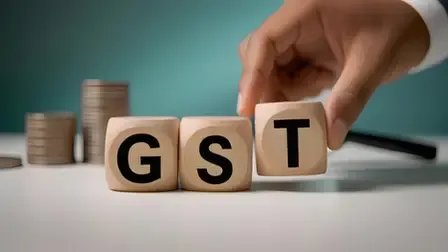
Synopsis
Key Takeaways
- GST 2.0 reforms significantly lower tax rates for small cars and motorcycles.
- Enhanced competitiveness through customs duty exemptions and incentives.
- India’s automotive sector produced 28 million vehicles in 2024.
- Support for electric vehicles with a continued 5% GST.
- Investment in training over 30,000 engineers to meet Japanese standards.
New Delhi, Nov 17 (NationPress) The reforms in GST 2.0, adjustments in customs duties, and the India–Japan Free Trade Agreement (CEPA) are revolutionizing the competitiveness and future direction of India’s automotive sector, supported by $43.3 billion in total Japanese investments, as highlighted in a recent industry report published on Monday.
The report, produced by Grant Thornton Bharat in collaboration with the Indo-Japan Chamber of Commerce and Industry (IJCCI), titled ‘Navigating change: GST 2.0, customs, and FTA impacts on the India–Japan auto sector,’ reveals that the implementation of GST 2.0 in September signified a crucial turning point for the automotive industry in India, simplifying tax structures, improving affordability, and stimulating consumer demand across various vehicle categories.
As per the revised GST framework, small cars and motorcycles with engine capacities below 350cc are now subject to an 18 per cent GST, reduced from 28 per cent plus cess, leading to price drops of up to Rs 1 lakh for certain models. On the other hand, premium automobiles, including SUVs and high-end motorcycles, now incur a flat 40 per cent GST, while electric vehicles continue to enjoy a 5 per cent GST, further promoting the transition to green mobility.
The report also indicates that the industry has experienced a notable increase in customer interest and vehicle sales post-rate adjustments, with booking volumes in the small car category surging by almost 50 per cent.
In line with GST reforms, the Union Budget 2025 introduced initiatives to enhance the EV sector by striking a balance between supply and demand incentives. Customs duty exemptions on lithium-ion battery scrap and essential minerals like lead and copper are aimed at securing raw materials and boosting employment opportunities.
With India’s automotive industry contributing 7.1 per cent to the national GDP and nearly half of its manufacturing GDP, the sector produced 28 million vehicles in 2024, reflecting an 8 per cent increase over 2023, while exports surpassed 4.5 million units, as noted in the report.
Sohrab Bararia from Grant Thornton Bharat remarked, "The convergence of GST 2.0 and tailored customs incentives signifies a transformative period for India’s automotive industry. The lower tax rates, streamlined compliance, and supply-chain-oriented exemptions will not only enhance India’s cost competitiveness but also fortify its role as a manufacturing and export hub for Japanese automotive companies."
Further exemptions on capital goods for battery production bolster the industry ecosystem, while tariff reductions on motorcycles and CKD/SKD units of large vehicles improve affordability and competitiveness in line with the Atmanirbhar Bharat vision.
The report suggests that this regulatory overhaul will expedite investment inflows, encourage EV adoption, and facilitate the next phase of Indo–Japan collaboration in clean mobility and advanced manufacturing.
The India-Japan CEPA and the India-Japan Digital Partnership (IJDP) are driving innovations in EVs, connected vehicles, and AI-driven manufacturing, while initiatives such as the Supply Chain Resilience Initiative (SCRI) are fostering the localization of critical components and diversification of sourcing.
Through the Japan-India Institute for Manufacturing (JIM) and Japanese Endowed Courses (JEC), over 30,000 Indian engineers are receiving training to meet Japanese manufacturing standards, thereby developing a skilled workforce for advanced automotive production. The report also identifies key customs and trade policy frameworks that enhance competitiveness.

